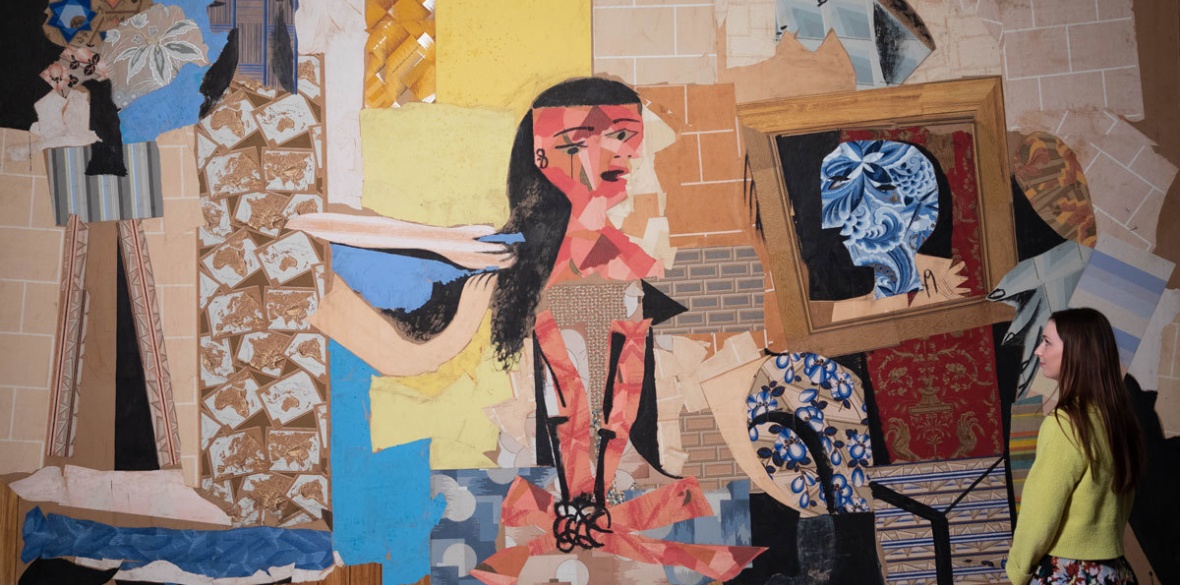This is the last article you can read this month
You can read more article this month
You can read more articles this month
Sorry your limit is up for this month
Reset on:
Please help support the Morning Star by subscribing here
This strange year began and ended with survey exhibitions of two influential giants of 20th-century art.
Picasso and Paper filled the Royal Academy’s large exhibition rooms from January to August, while Bruce Nauman’s ongoing exhibition at Tate Modern opened in October. Their subjects and materials may differ but by cracking open the sacred aesthetic canons of their respective eras, both artists dramatically widened the forms of expression for future generations.
Curated in a refreshingly straightforward way, the Picasso exhibition provided a chronological survey of his work. His decisiveness and powers of concentration and observation shone out from his childhood drawing of a dog through to the confident sweep of brush and ink of his large, late drawings.
One of the highlights was Women at their Toilette. Created in 1938 when the fascist grip on Italy and Germany threatened to spread to the nascent republic of Picasso’s native Spain, this collage’s seemingly innocuous subject fiercely expressed the current political anxieties.
The cut and torn wallpapers and fragmented cubist forms create unsettling, spatial dissonances which magnify the fears conveyed by frightened expression and taut skeletal body of the central woman. Measuring almost three metres by four and a half it rivals the gravitas of the better-known Guernica.
I was saddened to see few young visitors there. In contrast, young people flocked to the Bruce Nauman exhibition. His 1960s questioning of traditional mediums led him to become a major pioneer of installation, performance and video art.
Far from being purely formal novelties, the freedoms claimed by Picasso and Nauman stemmed from sincere searches for meaningful forms through which to express the rapidly changing zeitgeist.
That Michael Clark shared their subversiveness and spirit of enquiry sparkles from his exhibition at the Barbican Gallery. One of the great choreographers of our own times, since the mid-1980s Clark has delighted in taunting cultural snobbery with music, sets, costumes and choreography doused with references to sex, drugs, rock and roll and to popular culture.
Yet the meticulous attention to detail of every aspect of his productions, which are as precise as his choreography, are the mark of a truly great artist.
Italian Threads: MITA Textile Design 1926-1976 at the Estorick Collection dazzled with the loose-limbed elegance at which Italian designers excel.
The Manifattura Italiana Tappeti Artistici (MITA) commissioned and manufactured stunning textile and carpet designs. Either abstracted from recognisable motifs, or totally liberated from representational patterns by the influence of contemporary art, MITA designs have not dated.
Sinuous abstract swirls of brown, pinks and golds waltz across Antonia Campi’s 1947 rug design, while the grinning clown, shaped from differing geometric fabric designs, on Marco Biassoni’s Clown Scarf is guaranteed to raise a smile and Emanuele Luzzzati’s The Thieving Magpie tapestry design (c1968) lifts the spirits with its plethora of birds fluttering among a blaze of autumn flowers.
The ongoing Art Deco by the Sea exhibition at Newcastle’s Laing Art Gallery offers posters, paintings, photographs and objects which convey the optimism and modernity of 1920s and 1930s British modernist design.
The Barnett Freedman exhibition (1901-1957) at Chichester’s Pallant House is overdue. Born in London’s East End to Jewish immigrants, he overcame poor health, a lack of formal education and of social contacts, to achieve a career as a fine illustrator through sheer talent and determination. His fluid line and acute eye portrays humanity’s idiosyncrasies with the warmth and humour of a forgiving heart.
Staging exhibitions takes many months. So a final tip of my hat to the researchers, curators, administrators, designers,carpenters, transporters and invigilators who continued to create and look after exhibitions, despite the arduous circumstances of this plague year.









